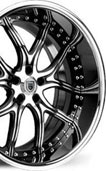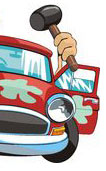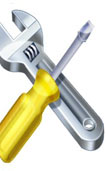What should I look for when choosing a repair shop?
Ask for recommendations from friends, family, and other people you trust. Look for a repair shop before you need one to avoid being rushed into a last-minute decision.
Look for shops that display various certifications — like an Automotive Service Excellence seal. Certification indicates that some or all of the technicians meet basic standards of knowledge and competence in specific technical areas. Make sure the certifications are current, but remember that certification alone is no guarantee of good or honest work.
Repair Charges: Unlocking the Mystery
Before you arrange to have any work performed, ask how the shop prices its work. Some shops charge a flat rate for labor on auto repairs. This published rate is based on an independent or manufacturer’s estimate of the time required to complete repairs. Others charge on the basis of the actual time the technician worked on the repair. If you decide to get the work done, we will be glad to provide a written estimate.
The optimum / optimally portion about creating an enlightening essay might be the substantial variety of issues it is possible to pick from. There are a number of excellent themes because of this form of article. Within this portion of the guide, we will offer you some hints for creating a excellent reflective article. This will unquestionably generate the reader mo Re fascinated and concerned within the article.
Before writing, you should invest a substantial period of time, in contemplating about that problem. One particular typical error a large number of individuals do while composing it, is making an overall statement about what they’re going to write my paper. The perfect thought that you have to focus upon initially, is the aim of writing this essay. An establishment of the relationship between the motive and effect is becoming the most vital portion of an essay.
As a result of this really cause, many women and men find it demanding to compose this type of composition. Usually, this may be your teacher or classmates, or anyone you’re feeling comfortable reading the article to assist you proof read it. Teachers also needs to provide the youngsters suitable tips for every sort of article which they have to compose.
A reflective essay is not just a great approach for those teachers to rate the student’s English writing competence, yet it is also the opportunity for a student to explore his significant or creative abilities. End it utilizing something that may add some truth to your own essay. Below are a few excellent article issues that children may discover straightforward to compose. While every individual on the earth adopts another manner of writing an essay, there are a few generally accepted principles.
What should a written estimate include?
It should identify the condition to be repaired, the parts needed, and the anticipated labor charge. It should state that the shop will contact you for approval before they do any work exceeding a specified amount of time or money.
What should I know about the parts to be repaired or replaced?
Parts are classified as:
New — these parts generally are made to original manufacturer’s specifications, either by the vehicle manufacturer or an independent company.
Re-manufactured, rebuilt and reconditioned — these terms generally mean the same thing: parts have been restored to a sound working condition. Many manufacturers offer a warranty covering replacement parts, but not the labor to install them.
Salvage — These are used parts taken from another vehicle without alteration. Salvage parts may be the only source for certain items, though their reliability is seldom guaranteed.
What do I need after the work is done?
Get a completed repair order describing the work done. It should list each repair, parts supplied, the cost of each part, labor charges, upon request we will provide all parts replaced for your inspection and will completely explain why the part was replaced.
Preventive Maintenance
What are the consequences of postponing maintenance?
Many parts on your vehicle are interrelated. Ignoring maintenance can lead to trouble: specific parts — or an entire system — can fail. Neglecting even simple routine maintenance, like changing the oil or checking the coolant, can lead to poor fuel economy, unreliability, or costly breakdowns. It also may invalidate your warranty.
What maintenance guidelines should I follow to avoid costly repairs?
Follow the manufacturer’s maintenance schedule in your owner’s manual for your type of driving. Some repair shops create their own maintenance schedules, which call for more frequent servicing than the manufacturer’s recommendations. Compare shop maintenance schedules with those recommended in your owner’s manual. Ask the repair shop to explain — and make sure you understand — why it recommends service beyond the recommended schedule.
Service Contracts
Many automobile dealers and others sell optional contracts — service contracts — issued by vehicle manufacturers or independent companies. Not all service contracts are the same; prices vary and usually are negotiable. To help decide whether to purchase a service contract, consider:
- Its cost.
- The repairs to be covered.
- Whether coverage overlaps coverage provided by any other warranty.
- The deductible.
- Where the repairs are to be performed.
- Procedures required to file a claim, like prior authorization for specific repairs or meeting required vehicle maintenance schedules.
- Whether repair costs are paid directly by the company to the repair shop or whether you will have to pay first and get reimbursed.
Heading Off Problems
The more you know about your vehicle, the more likely you’ll be able to head off repair problems. You can detect many common vehicle problems by using your senses: eyeballing the area around your vehicle, listening for strange noises, sensing a difference in the way your vehicle handles, or even noticing unusual odors.
Looks Like Trouble
Small stains or an occasional drop of fluid under your vehicle may not mean much. But wet spots deserve attention; check puddles immediately.
You can identify fluids by their color and consistency:
Yellowish green, pastel blue or florescent orange colors indicate an overheated engine or an antifreeze leak caused by a bad hose, water pump or leaking radiator.
A dark brown or black oily fluid means the engine is leaking oil. A bad seal or gasket could cause the leak.
A red oily spot indicates a transmission or power-steering fluid leak.
A puddle of clear water usually is no problem. It may be normal condensation from your vehicle’s air conditioner.
Smells Like Trouble
Some problems are under your nose. You can detect them by their odor:
The smell of burned toast — a light, sharp odor — often signals an electrical short and burning insulation. To be safe, try not to drive the vehicle until the problem is diagnosed.
The smell of rotten eggs — a continuous burning-sulphur smell — usually indicates a problem in the catalytic converter or other emission control devices. Don’t delay diagnosis and repair.
A thick acrid odor usually means burning oil. Look for sign of a leak.
The smell of gasoline vapors after a failed start may mean you have flooded the engine. Wait a few minutes before trying again. If the odor persists, chances are there’s a leak in the fuel system — a potentially dangerous problem that needs immediate attention.
Burning resin or an acrid chemical odor may signal overheated brakes or clutch. Check the parking brake. Stop. Allow the brakes to cool after repeated hard braking on mountain roads. Light smoke coming from a wheel indicates a stuck brake. The vehicle should be towed for repair.
A sweet, steamy odor indicates a coolant leak. If the temperature gauge or warning light does not indicate overheating, drive carefully to the nearest service station, keeping an eye on your gauges. If the odor is accompanied by a hot, metallic scent and steam from under the hood, your engine has overheated. Pull over immediately. Continued driving could cause severe engine damage. The vehicle should be towed for repair.
Sounds Like Trouble
Squeaks, squeals, rattles, rumbles, and other sounds provide valuable clues about problems and maintenance needs. Here are some common noises and what they mean:
Squeal — A shrill, sharp noise, usually related to engine speed: Loose or worn power steering, fan or air conditioning belt.
Click — A slight sharp noise, related to either engine speed or vehicle speed:
- Loose wheel cover.
- Loose or bent fan blade.
- Stuck valve lifter or low engine oil.
Screech — A high-pitched, piercing metallic sound; usually occurs while the vehicle is in motion:
- Caused by brake wear indicators to let you know it’s time for maintenance.
Rumble — a low-pitched rhythmic sound.
- Defective exhaust pipe, converter or muffler.
- Worn universal joint or other drive-line component.
Ping — A high-pitched metallic tapping sound, related to engine speed:
Usually caused by using gas with a lower octane rating than recommended. Check your owner’s manual for the proper octane rating. If the problem persists, engine ignition timing could be at fault.
Heavy Knock — A rhythmic pounding sound:
- Worn crankshaft or connecting rod bearings.
- Loose transmission torque converter.
Clunk — A random thumping sound:
- Loose shock absorber or other suspension component.
- Loose exhaust pipe or muffler.
Feels Like Trouble
Difficult handling, a rough ride, vibration and poor performance are symptoms you can feel. They almost always indicate a problem.
Steering
Misaligned front wheels and/or worn steering components, like the idler or ball joint, can cause wandering or difficulty steering in a straight line.
Pulling — the vehicle’s tendency to steer to the left or right — can be caused by something as routine as under-inflated tires, or as serious as a damaged or misaligned front end.
Ride and Handling
Worn shock absorbers or other suspension components — or improper tire inflation — can contribute to poor cornering.
While there is no hard and fast rule about when to replace shock absorbers or struts, try this test: bounce the vehicle up and down hard at each wheel and then let go. See how many times the vehicle bounces. Weak shocks will allow the vehicle to bounce twice or more.
Springs do not normally wear out and do not need replacement unless one corner of the vehicle is lower than the others. Overloading your vehicle can damage the springs.
Balance tires properly. An unbalanced or improperly balanced tire causes a vehicle to vibrate and may wear steering and suspension components prematurely.
Brakes
Brake problems have several symptoms. Schedule diagnosis and repair if:
- The vehicle pulls to one side when the brakes are applied.
- The brake pedal sinks to the floor when pressure is maintained.
- You hear or feel scraping or grinding during braking.
- The “brake” light on the instrument panel is lit.
Engine
The following symptoms indicate engine trouble. Get a diagnosis and schedule the repair.
- Difficulty starting the engine.
- The “check engine” light on the instrument panel is lit.
- Rough idling or stalling.
- Poor acceleration.
- Poor fuel economy.
- Excessive oil use (more than one quart between changes).
- Engine continues running after the key is removed.
Transmission
Poor transmission performance may come from actual component failure or a simple disconnected hose or plugged filter. Make sure the technician checks the simple items first; transmission repairs normally are expensive. Some of the most common symptoms of transmission problems are:
- Abrupt or hard shifts between gears.
- Delayed or no response when shifting from neutral to drive or reverse.
- Failure to shift during normal acceleration.
- Slippage during acceleration. The engine speeds up, but the vehicle does not respond





